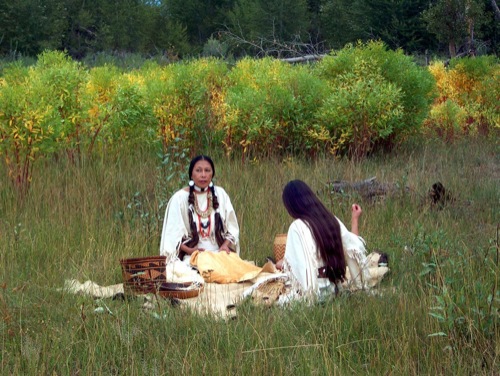
Courtesy Idaho Tourism
Sacajawea Interpretive Cultural and Educational Center
Salmon, Idaho
The 71-acre Sacajawea Interpretive, Cultural and Educational Center is dedicated to a prominent Native American woman. Sacajawea, an Agai Dika Lemhi Shoshone, played a critical role in the Corps of Discovery, better known as the Lewis and Clark Expedition.
“Sacajawea married a white man, Toussaint Charbonneau, a French-Canadian explorer and trader hired to guide Lewis and Clark. She went along, carrying her newborn child on her back,” said park director Judy Barkley.
“Had it not been for Sacajawea, the expedition wouldn’t have made it. When they got to the Big Hole in Montana, she recognized the country and led the party to the Lemhi-Shoshone tribe so they could barter for horses and provisions,” said Barkley.
The area is extremely mountainous. The group’s passage by boat was impossible. Sacajawea is credited with saving the expedition. “She was an incredible, powerful woman to lead the expedition to safety. She dealt with tremendous adversity,” Barkley said.
With all of these native cultural museums and monuments around the United States, it might be easy to forget one important point, Dobbs concluded. “Native Americans are a living culture. They’re not museum pieces. This is not a dead culture.”
www.sacajaweacenter.org
Crazy Horse Memorial
Custer, S.D.
When completed, the Crazy Horse Memorial in southwest South Dakota will be the world’s largest mountain sculpture. In 1948, sculptor Korczak Ziolkowski was commissioned by Lakota Chief Henry Standing Bear and his tribe to sculpt the revered chief.
Lakota leaders had watched the Mount Rushmore monument being carved nearby and feared they would lose their culture unless it was preserved.
The assignment became Ziolkowski’s life work. He died in 1982, but his widow, Ruth, and children continue the carving. The face of Crazy Horse was dedicated in 1998, but much work remains. When finished, the massive sculpture, which will be 641 feet long by 563 feet high, will depict Crazy Horse pointing over his horse’s head toward the lands where, in his words, “my dead lie buried.”
“They’ve never had a completion date. If you climb the mountain, you’ll see why: It’s huge,” said Pat Dobbs, the memorial’s media coordinator. “When you first see the face, you can’t appreciate that it’s the height of a nine-story building. Take the width of all four Mount Rushmore presidential busts, and they’ll fit into the carved head and hair of Crazy Horse.”
Dobbs said that in Lakota culture, if you honor someone, it must originate from family. “It isn’t like you or I building a Lincoln Memorial in Washington, D.C.”
The tribe chose Crazy Horse because of his storied leadership of his people. The mountain face also represents all natives of North America.
The site includes a museum, a Native American education and cultural center, the sculptor’s preserved studio and home, a restaurant and a gift shop.
www.crazyhorsememorial.org











